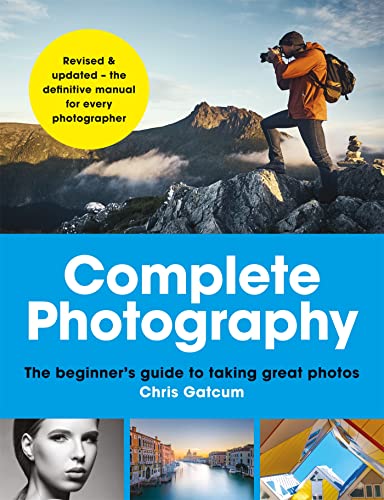A Comprehensive Photography Guide: Mastering Cameras for Enhanced Photo Capturing, Editing, and Sharing

A Comprehensive Photography Guide: Mastering Cameras for Enhanced Photo Capturing, Editing, and Sharing
Please note that this article contains affiliate links. If you make a purchase through these links, we may earn a commission.
Photography has become an integral part of our lives. Whether it’s capturing precious moments with loved ones or showcasing our creative vision to the world, photography allows us to express ourselves in ways words simply cannot. To truly master the art of photography, it is essential to have a deep understanding of cameras and their capabilities. In this comprehensive guide, we will explore the key aspects of cameras that will enhance your photo capturing, editing, and sharing experiences.
The Power of a Good Camera
A good camera can transform an ordinary moment into something extraordinary. It captures the essence of a scene with precision and clarity, allowing you to relive those cherished memories for years to come. But what makes a camera truly exceptional?
Sensor Size and Image Quality
One of the most important factors in determining image quality is the size of the camera’s sensor. A larger sensor captures more light and produces sharper images with greater detail and dynamic range. When choosing a camera, look for one with a larger sensor size for superior image quality.
Megapixels: Myth vs Reality
Many people believe that more megapixels equate to better image quality. While megapixels do play a role in determining image resolution, they are not the sole indicator of picture quality. Factors such as sensor size, lens quality, and image processing algorithms also contribute significantly to overall image performance.
Lens Selection: Versatility and Creativity
The lens you choose can greatly impact your photography. Different lenses offer varying focal lengths, apertures, and optical characteristics that allow you to capture unique perspectives and achieve desired effects. Invest in versatile lenses that cover a wide range of focal lengths to expand your creative possibilities.
Mastering Camera Settings
Understanding your camera’s settings is crucial for taking full control of your photography. Here are a few key settings to familiarize yourself with:
Aperture: Controlling Depth of Field
The aperture setting determines how much light enters the camera and affects the depth of field in your photos. A wider aperture (lower f-number) creates a shallow depth of field, ideal for portraits or isolating subjects from the background. A smaller aperture (higher f-number) increases the depth of field, suitable for landscape photography.
Shutter Speed: Freezing or Blurring Motion
Shutter speed controls the amount of time the camera’s sensor is exposed to light. Faster shutter speeds freeze action, while slower speeds create motion blur. Experimenting with different shutter speeds allows you to capture dynamic scenes or add artistic effects to your images.
ISO: Balancing Sensitivity and Noise
ISO determines the camera’s sensitivity to light. Higher ISO values allow you to shoot in low-light conditions but may introduce digital noise into your photos. Finding the right balance between ISO and image quality is essential for capturing well-exposed shots.
Editing: Unleashing Creativity
Editing is where your vision truly comes alive. With the right tools and techniques, you can transform ordinary photos into extraordinary works of art. Here are some popular editing software options:
- Adobe Lightroom: Known for its powerful editing capabilities and intuitive interface.
- Capture One: Offers precise color grading tools and exceptional RAW file support.
- Luminar AI: Utilizes artificial intelligence to simplify complex editing tasks.
Experiment with different editing styles, but remember that subtlety often yields more impactful results. Enhance colors, adjust exposure, and fine-tune details to bring out the best in your images.
Sharing Your Masterpieces
Once you’ve captured and edited your photos, it’s time to share them with the world! Here are a few ways to showcase your work:
Social Media Platforms
Share your photos on popular social media platforms like Instagram, Facebook, or Twitter. Engage with the photography community, gain inspiration from others, and receive feedback on your work.
Online Photography Communities
Join online photography communities such as 500px or Flickr to connect with fellow photographers, participate in contests, and showcase your portfolio. These platforms provide a supportive environment for learning and growth.
Print and Display Options
Print your favorite photos and create stunning wall art or personalized photo albums. Seeing your images in physical form adds a tangible element to your photography journey.
Specs:
- Sensor Size: Varies based on camera model
- Megapixels: Varies based on camera model
- Lens Compatibility: Interchangeable lenses (specific to camera brand)
- Aperture Range: Varies based on lens selection
- Shutter Speed Range: Varies based on camera model
- ISO Range: Varies based on camera model
- Editing Software: Adobe Lightroom, Capture One, Luminar AI
Conclusion
Mastering cameras for enhanced photo capturing, editing, and sharing is an ongoing process that requires both technical knowledge and creative vision. By understanding the key aspects of cameras, experimenting with settings, exploring editing techniques, and sharing your work with others, you can take your photography skills to new heights.
Remember, the journey towards becoming a skilled photographer is as important as the destination. Embrace the learning process, push boundaries, and capture moments that truly speak to your soul. So why wait? Start capturing breathtaking images today!
This article is an advertisement for the recommended camera. Buy now and embark on a transformative photography experience!
Please note that we receive a commission for any purchases made through the above affiliate link.